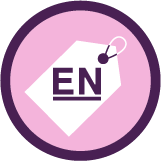English for shopping
Online shopping vs. traditional shopping
Practice: Online Shopping vs. Traditional Shopping
Quiz: English for shopping
At the supermarket
Get to know common shopping items
Practice: Get to Know Common Shopping Items
Yummy! Using adjectives for food
Practice: Using adjectives for food
What are quantifiers for?
Practice: What are quantifiers for?
How much does it cost?
Practice: How much does it cost?
Buying at the supermarket
Practice: Buying at the supermarket
Quiz: At the supermarket
In a clothing store
Get to know new words for clothes
Practice: Get to know new words for clothes
Adjectives for clothes
Practice: Adjectives for clothes
Learn new words for accessories
Practice: Learn new words for accessories
Buying clothes
Practice: Buying clothes
Quiz: In a clothing store
At the local market
Popular shops in the city
Words for describing shops
Practice: Popular shops in the city
Quiz: At the local market
Você não tem acesso a esta aula
Continue aprendendo! Junte-se e comece a impulsionar sua carreira
Se você já tem uma conta,

What are quantifiers for?
7/25Existen dos tipos de sustantivos: contables e incontables. Como su nombre lo menciona, los sustantivos contables son aquellos que se pueden contar y los sustantivos incontables no se puede, son abstractos.
Sustantivos contables
Los sustantivos contables (countable nouns) son aquellos que se pueden contar, también se los identifica de manera singular y plural.
En la forma singular se utilizan los artículos “a / an” antes de cada sustantivo.
- An orange
- A car
En la forma plural del sustantivo regular e irregular, se los puede contar empleando números.
- two brothers
- ten boys
- four children
Sustantivos incontables
Los sustantivos incontables (uncountable nouns) hacen referencia a comidas, materiales, líquidos, ideas abstractas o cosas de las cuales no tengamos claro sus límites.
- Comidas: sugar, rice, bread.
- Líquidos: water, beer, juice.
- Ideas abstractas:
- food
- money
- time
- fruit
- love
Cómo convertir sustantivos incontables a contables
Pero yo si puedo contar el dinero, el pan y las bebidas ¿Por qué son incontables? Porque lo que cuentas son cantidades de dinero (un billete, tres pesos), no el dinero en sí (tres dineros).
Es por eso que necesitas cuantificadores para hacer referencias a las cantidades del sustantivo incontable, mas no al sustantivo en sí.
❌ Inválido: three moneys, four waters, two times.
✅ Válido: three dollars, four bottles of water, two minutes.
Cuantificadores comunes
Algunos de los cuantificadores comunes para convertir sustantivos incontables a contables son:
- A can (Una lata de …)
- A jar (Una jarra de…)
- A loaf (Una barra de …)
- A pack (Un paquete de …)
- A bar (Una barra de …)
- A bottle (Una botella de …)
- minutes, seconds, dollars, etc
También puedes utilizarlos de manera plural: tree bottles, two packs.
Cómo utilizar “How many / much?”
"How many … ?" y "How much … ?" son expresiones para preguntar sobre la cantidad de algo, su uso depende si el sustantivo es contable o incontable.
Cómo utilizar “How many … ?”
“How many … ?” es usado para sustantivos contables en plural, por ejemplo:
- How many books did you read?
- How many cookies will you eat?
- How many shoes should I take?
Cómo utiliza How much … ?
“How much … ?” es usado para sustantivos incontables, por ejemplo:
- How much milk would you like?
- How much money did you spend?
- How much time do you need?
Cómo utilizar “How much?” para preguntar el precio
- How much is this sweater?
- How much are these chips?
- How much did your lunch cost?
- How much will it cost me?
Cómo utilizar los cuantificadores “some” y “any”
- "Some" es usado para oraciones positivas.
- "Any" es usado para oraciones negativas y preguntas.
Ejemplos de cuantificadores
(+) We met some friends last night.
(-) I didn’t buy any bananas.
(?) Is there any juice at home?
(+) I think she has some flowers for you.
(-) I don’t think she will have any time.
(?) Do you have any milk?
Excepción a la regla con “some”
"Some" también puede ser utilizado para preguntas que se refieran a solicitudes, ofrecimientos y sugerencias.
- Would you like some potatoes? (ofrecimiento)
- Can I take some of these books home? (solicitud)
- Why don’t we buy some snacks? (sugerencia)
Practiquemos el uso de How many / much
Contesta las siguientes preguntas según corresponda.
- How ____ pineapples do you need?
- How ____ juice would you like?
- How ____ toys do you need?
- How ____ does that cost?
Respuestas
- many
- much
- many
- much
Ejercicio de sustantivos contables e incontables
Entra en el siguiente enlace y resuelve la actividad.
Una vez finalizada la actividad, revisa las respuestas aquí:
Contribución creada por Andrés Guano (Platzi Contributor).
Contribuições 0
Perguntas 0
Quer ver mais contribuições, perguntas e respostas da comunidade?